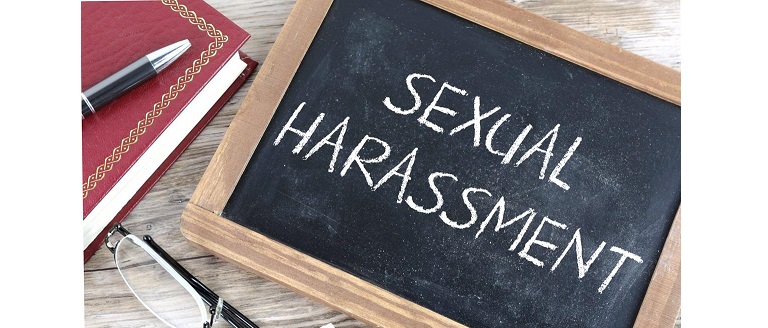Home » Combating Sexual Harassment at the Workplace: A Call for Change

Introduction
Today, sexual harassment remains a persistent issue that affects countless individuals, particularly in the workplace. This form of misconduct not only creates a hostile environment but also undermines the overall well-being and professional growth of victims. To foster a safe and inclusive work environment, it is imperative that we address and combat sexual harassment effectively.
Understanding Sexual Harassment
Sexual harassment refers to any unwelcome or inappropriate behaviour of a sexual nature that interferes with an individual’s work performance or creates an intimidating, hostile, or offensive environment. It can manifest in various forms, including unwanted advances, offensive remarks, suggestive gestures, and explicit materials. Regardless of the gender of the victim or the harasser, sexual harassment is a violation of an individual’s dignity and basic human rights.
Impacts on Individuals and Organizations
The effects of sexual harassment can be profound, both on the individual and the organization. For victims, it can lead to psychological distress, diminished self-esteem, anxiety, and depression, which may result in decreased productivity and motivation. Furthermore, workplace morale suffers, employee turnover increases, and the reputation of the organization is tarnished. By prioritizing prevention and intervention, businesses can create a positive work culture that fosters personal growth and productivity.
Prevention and Intervention Strategies
Organizations must establish clear policies and procedures to prevent and address sexual harassment. This includes implementing comprehensive training programs that educate employees about their rights and responsibilities, creating safe reporting channels, and conducting impartial investigations into any reported incidents. Employers should promote a culture of respect, inclusivity, and zero tolerance toward harassment. Encouraging bystander intervention and providing support resources for victims are crucial steps in combating this issue effectively.
The Role of Leadership
Leadership plays a pivotal role in eradicating sexual harassment in the workplace. It is vital for management to lead by example, demonstrating a commitment to equality and holding individuals accountable for their actions. Executives must actively support victims, encourage open dialogue, and ensure that policies are consistently enforced.
Moving Forward
To create lasting change, we must all work together to combat sexual harassment at every level. By promoting awareness, fostering a culture of respect, and implementing robust prevention and intervention strategies, we can create safer and more inclusive work environments that empower individuals to thrive and contribute their best.
Conclusion
Sexual harassment in the workplace is an issue that demands our immediate attention and collective action. By embracing a zero-tolerance approach, for this in our Institution (LINGAYAS VIDYAPEETH) there is an ICC (Internal Complaint Committee) that deals with the issues relating to any kind of Sexual Harassment within the institution for a supportive and comfortable working environment especially for women. We can pave the way for a future where every individual feels safe, respected, and valued in their professional lives.
Ms. Ruchi Kaushik
Assistant Professor
September 15, 2023RECENT POSTS
CATEGORIES
TAGS
Agriculture Agriculture future AI Architecture artificial intelligence BA English BA Psychology BTech Engineering Business management career Career-Specific Education career guide Career Opportunities career option career scope Civil engineering commerce and management Computer Science Computer science engineering Data science degree education Engineering engineering college Engineering students English Literature english program Exam tips Fashion Design Fashion design course Higher Education Journalism journalism and mass communication law Law career Machine Learning MA Psychology Master degree mathematics MBA Mechanical Engineering Pharmacy Psychology Research and Development students
University Address: Nachauli, Jasana Road, Faridabad, Haryana
Toll Free: 1800-120-4613
Mobile : 8447744303 | 8447744304 | 8447744306 | 8447744309
Address: C-72, Second Floor, Shivalik, Near Malviya Nagar,
Above HDFC Bank, New Delhi 110017
Ph.No. - 011-46570515 / 45138169 / 41755703 / +91-7303152412
Jagmani Kutir, Ground Floor, Road No-1, Rajeev Nagar,
Near Darbar Marriage Hall, Patna-800024, Bihar
Contact No: 9818352069/8130120095
Mail: [email protected]
Copyrights © 1998 - 2025 Lingaya's Vidyapeeth (Deemed To Be University). All rights reserved.
It is important to note that the following email IDs and domains are fraudulent and do not belong to our university.
LV only conducts physical/online verification of any document related to examination on the following email id: